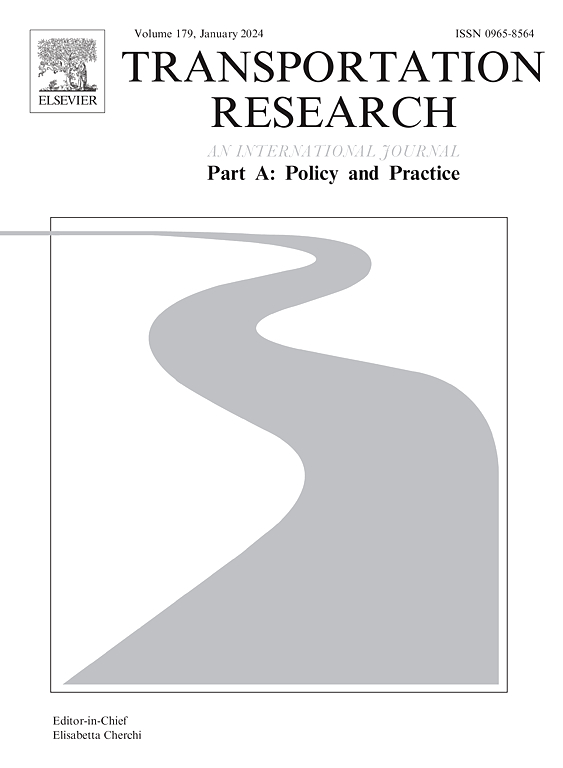In-person, hybrid or remote? Employers’ perspectives on the future of work post-pandemic
IF 6.3
1区 工程技术
Q1 ECONOMICS
Transportation Research Part A-Policy and Practice
Pub Date : 2024-09-28
DOI:10.1016/j.tra.2024.104273
引用次数: 0
Abstract
We present an employer-side perspective on remote work through the pandemic using data from top executives of 129 employers in North America. Our analysis suggests that at least some of the pandemic-accelerated changes to the work location landscape will likely stick; with some form of hybrid work being the norm. However, the patterns will vary by department (HR/legal/sales/IT, etc.) and by sector of operations. Top three concerns among employers include: supervision and mentoring, reduction in innovation, and creativity; and the top three benefits include their ability to retain / recruit talent, positive impact on public image and their ability to compete. An Ordered Probit model of the expected April 2024 work location strategy revealed that those in transportation, warehousing, and manufacturing sectors, those with a fully in-person approach to work pre-COVID, and those with a negative outlook towards the impact of remote work are likely to be more in-person-centered, while those with fully remote work approach in April 2020 are likely to be less in-person-centered. Lastly, we present data on resumption of business travel, in-person client interactions and changes in office space reconfigurations that employers have made since the beginning of the pandemic.
面对面、混合式还是远程?大流行后雇主对未来工作的看法
我们利用北美 129 家雇主的高层管理人员提供的数据,从雇主的角度介绍了大流行病期间的远程工作情况。我们的分析表明,至少有一些因大流行病而加速的工作地点变化可能会持续下去;某种形式的混合工作将成为常态。不过,不同部门(人力资源/法律/销售/IT 等)和不同业务领域的模式会有所不同。雇主关注的前三位问题包括:监督和指导、创新能力下降和创造力;而受益的前三位问题包括:留住/招聘人才的能力、对公众形象的积极影响以及竞争能力。对 2024 年 4 月预期工作地点策略的有序 Probit 模型显示,运输、仓储和制造行业的雇主、在 COVID 前采用完全面对面工作方式的雇主以及对远程工作的影响持负面看法的雇主可能更倾向于以面对面工作为中心,而在 2020 年 4 月采用完全远程工作方式的雇主可能更倾向于以面对面工作为中心。最后,我们介绍了自大流行病爆发以来,雇主在恢复商务旅行、与客户面对面交流以及重新配置办公空间方面的数据。
本文章由计算机程序翻译,如有差异,请以英文原文为准。
求助全文
约1分钟内获得全文
求助全文
来源期刊
CiteScore
13.20
自引率
7.80%
发文量
257
审稿时长
9.8 months
期刊介绍:
Transportation Research: Part A contains papers of general interest in all passenger and freight transportation modes: policy analysis, formulation and evaluation; planning; interaction with the political, socioeconomic and physical environment; design, management and evaluation of transportation systems. Topics are approached from any discipline or perspective: economics, engineering, sociology, psychology, etc. Case studies, survey and expository papers are included, as are articles which contribute to unification of the field, or to an understanding of the comparative aspects of different systems. Papers which assess the scope for technological innovation within a social or political framework are also published. The journal is international, and places equal emphasis on the problems of industrialized and non-industrialized regions.
Part A''s aims and scope are complementary to Transportation Research Part B: Methodological, Part C: Emerging Technologies and Part D: Transport and Environment. Part E: Logistics and Transportation Review. Part F: Traffic Psychology and Behaviour. The complete set forms the most cohesive and comprehensive reference of current research in transportation science.

 求助内容:
求助内容: 应助结果提醒方式:
应助结果提醒方式:


